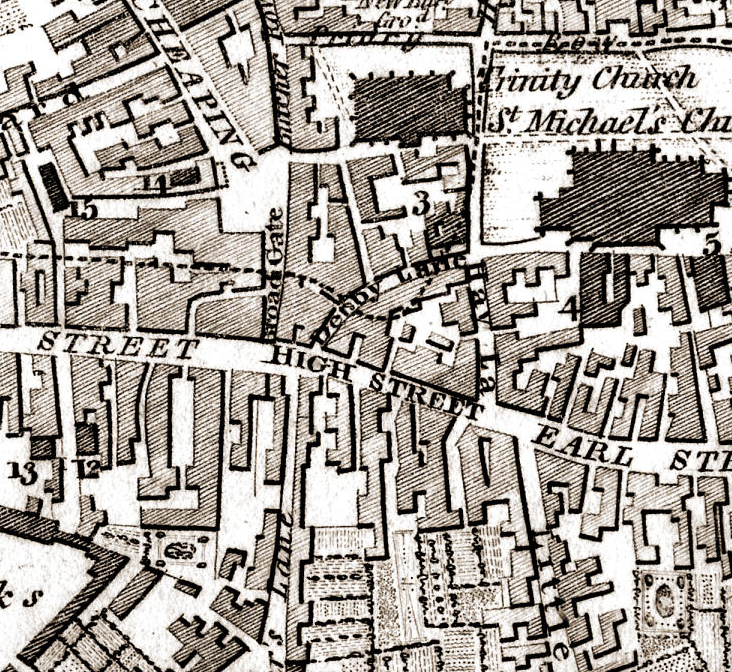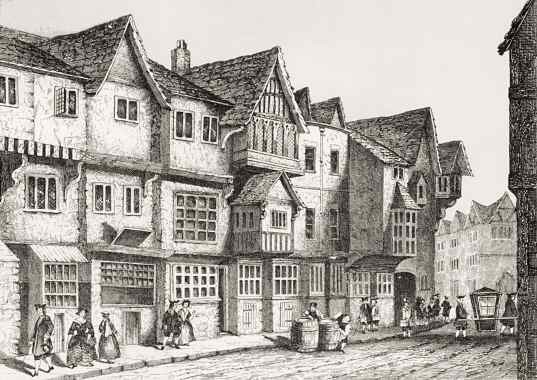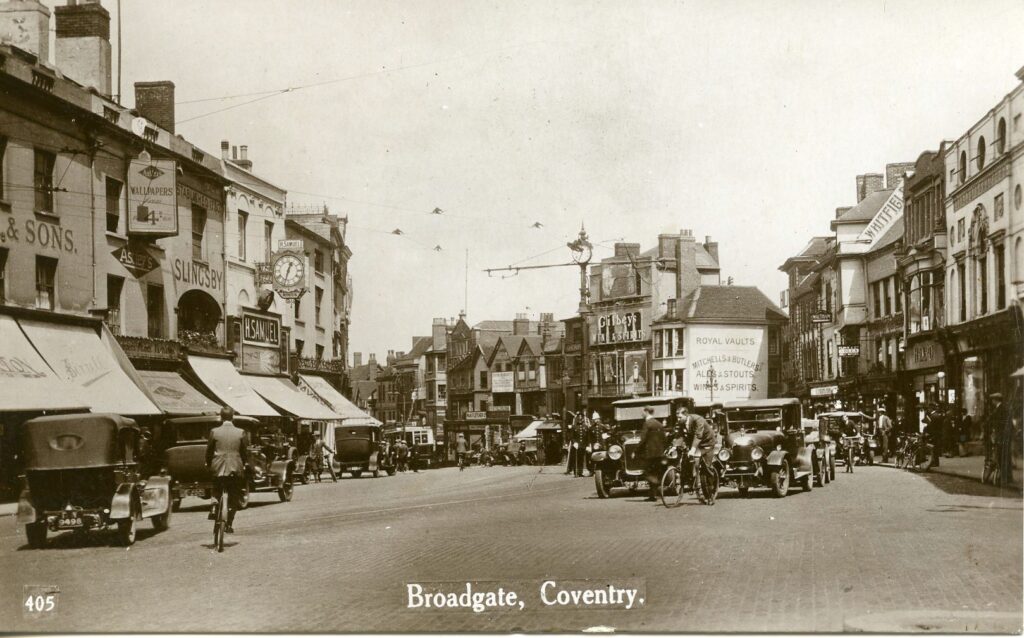Historian and CovSoc member David Fry shares his analysis of one of the city’s best known streets, which has changed rather more that anticipated over the centuries. David writes…..

Our image of places is defined most strongly by our own experiences of seeing a location. This can be reinforced by photographs but they are never earlier than the mid nineteenth century. Before this then we rely on drawings or paintings. Such factors have tended to entrench a timeless view of Broadgate; this iconic, spacious area at the centre of our city. For anyone new to the city it is natural to assume that it has always been THE broad street in existence since being named after the ‘broad gate’ leading to the twelfth century castle. Of course there have been many changes to Broadgate since its destruction during the Second World War and the subsequent reconstruction according to Gibson’s plan. And then there have been the more recent alterations of the last thirty years. But all have conformed to the notion of Broadgate as a broad space. The drawing above from the first half of the nineteenth century only serves to emphasise this point. It shows the view to the south, Smithford Street to the right and High Street to the left at the top of the above image.
Yet there is something not quite right here. Where are the varieties of historic styles that make up the city scape of medieval centres such as Coventry? These frontages are uniformly of the late Georgian period. What we are looking at is a brand new piece of urban planning – the comparatively recent origins of Broadgate as a ‘broad’ street.

Prior to this development of the 1820s Broadgate was a rather narrow road, partly featuring medieval buildings, that led to the wider area where Cross Cheaping began. It is quite clear from Roper’s map of 1807, which shows the area shortly before its redevelopment. The mapmaker has struggled to fit in the name so narrow was the street!
In widening the street most of the demolition work affected the west side. What was destroyed can be seen in this eighteenth century drawing by Armstrong. The view is from the top of Broadgate towards Cross Cheaping.

Benjamin Pool in his History of Coventry describes the work in these terms:
‘In 1820 another great public improvement was made, by the taking down of a great square block of ancient houses and other buildings comprising premises on the north side of Smithford Street; the west side of the old Broad Gate and others forming the angle extending to the gates of the Castle Inn, and facing down Cross Cheaping. The old Broad Gate was a narrow, but much used thoroughfare, with antique looking houses, one story projecting above another, and all occupied by leading tradespeople. The road was nearly on a line with Grey Friars’ Lane, and about as wide as that.’
The loss to Coventry’s medieval heritage was on a par with the later destruction of Butcher’s Row in the 1930s. Although supposedly, nothing stands still for long in Coventry less than a century later there was a clamour for improvement to the earlier ‘improvement’. The Coventry Graphic in 1914 speculated on how Broadgate might be developed. This was in response to criticisms of poor shopping facilities with too many small shops, lacking the larger stores of places such as Birmingham, which would offer more variety of goods (a never ending complaint). The only surprising thing is the lack of imagination shown and the idea that might take until 1964 to achieve what looks to be minimal changes. Only an increase in the buildings height appears to be the significant feature, and even that is not especially obvious.

A postcard view from a similar perspective is instructive. Admittedly it dates from little more than a decade later but only a few changes had been made by the outbreak of the Second World War. It would appear that the timeline of half a century was not so pessimistic after all. It was this snail-like response to the desperate needs of a rapidly growing economy that had persuaded the city council at the start of 1939 to hire the young, dynamic architect Donald Gibson to address the city centre’s problems. The wartime bombing left him with a clean sheet but despite all the radical changes a reformulated broader Broadgate laid at its heart.

